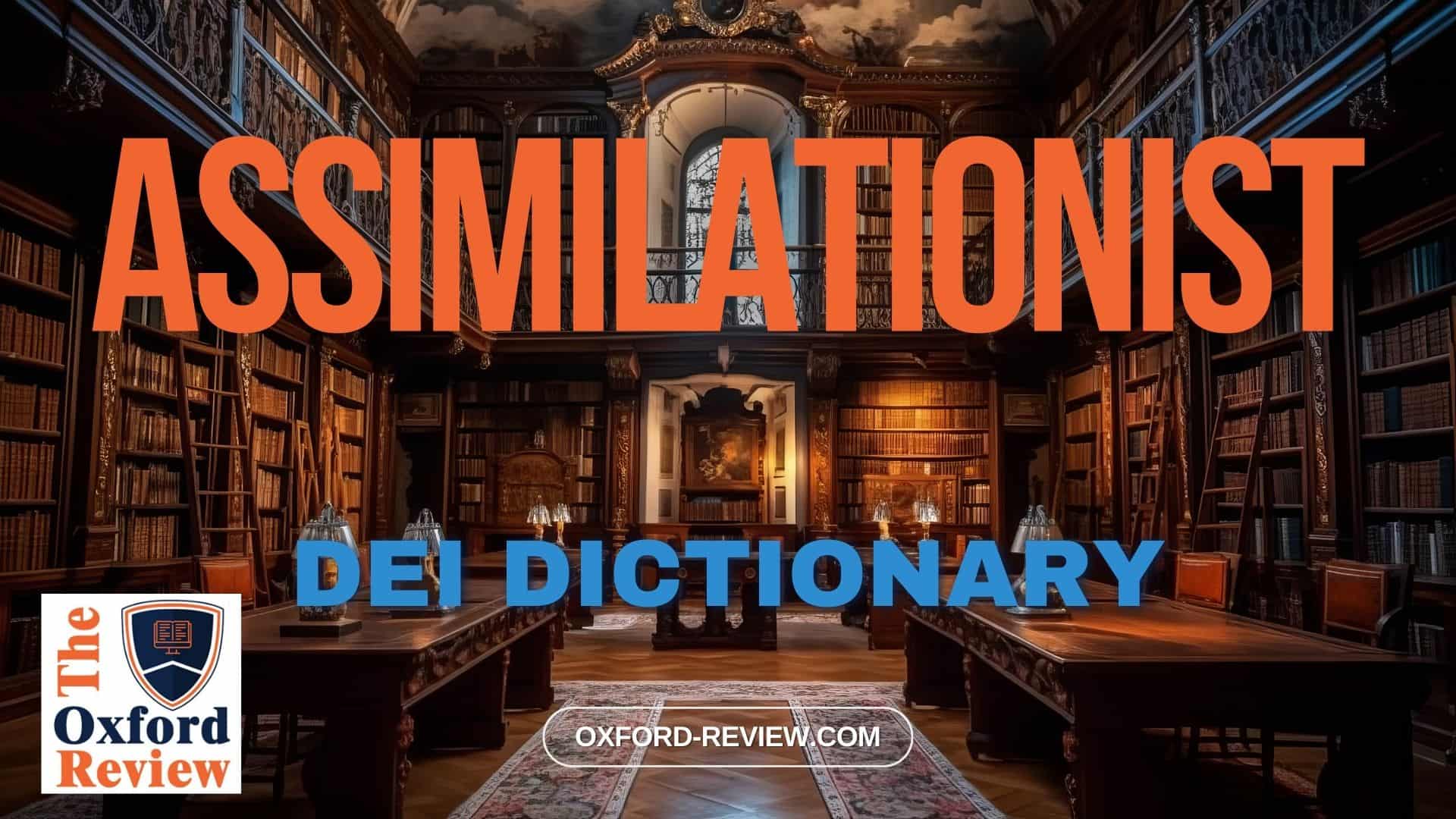Assimilationist – Definition and Explanation

Understanding Assimilationist: Definition, Examples, and Impact on DEI
In the realm of Diversity, Equity, and Inclusion (DEI), the term “Assimilationist” carries significant weight. It refers to a particular approach or ideology regarding the integration of diverse individuals or groups into a dominant culture. Understanding what assimilationism entails, its implications, and examples is crucial for fostering genuine inclusivity and equity in various societal spheres.
Definition:
Assimilationist, in the context of DEI, refers to a belief system or approach that encourages individuals or groups to conform to the dominant cultural norms, values, and practices, often at the expense of their own cultural identity. It suggests that the path to inclusion and acceptance lies in adopting the ways of the majority or dominant group, thereby minimising or erasing differences.
Explanation:
The assimilationist perspective can manifest in various settings, such as workplaces, educational institutions, or society at large. In workplaces, for instance, it may be reflected in policies or practices that expect employees from diverse backgrounds to adhere strictly to the dominant corporate culture, regardless of their unique perspectives or experiences. This can create barriers for individuals who do not fit the mould, perpetuating feelings of exclusion and marginalisation.
Moreover, in educational institutions, an assimilationist approach may be evident in curricula that prioritise the history, literature, and cultural perspectives of the dominant group while neglecting or marginalising those of minority communities. This not only undermines the richness of diversity but also reinforces power dynamics that privilege certain identities over others.
Impact on DEI:
The assimilationist approach poses significant challenges to DEI efforts. By prioritising assimilation over genuine inclusion and equity, it perpetuates systemic inequalities and marginalisation. It sends a message to individuals from underrepresented groups that their identities are inferior or invalid unless they conform to the dominant norms. This can lead to feelings of cultural erasure, loss of self-esteem, and disengagement from organisational or societal structures.
Furthermore, embracing assimilationism hinders innovation and creativity by stifling diverse perspectives and experiences that are essential for problem-solving and growth. True diversity and inclusion require recognising, valuing, and celebrating differences rather than erasing them.
Example:
An example of assimilationist ideology can be observed in historical contexts such as the forced assimilation policies imposed on Indigenous peoples in many countries. These policies aimed to eradicate Indigenous cultures, languages, and traditions in favour of the dominant colonial culture. Indigenous children were often forcibly removed from their families and placed in residential schools where they were prohibited from speaking their native languages or practising their cultural customs. This assimilationist approach not only inflicted deep trauma but also perpetuated intergenerational cycles of marginalisation and loss of cultural identity.
Conclusion:
In conclusion, understanding the concept of assimilationist is essential for fostering genuine diversity, equity, and inclusion in society. By recognising and challenging assimilationist ideologies and practices, organisations and communities can create environments where all individuals feel valued, respected, and empowered to bring their authentic selves to the table. Embracing diversity not only enriches communities but also fosters innovation, creativity, and social cohesion.
References:
Paxton, P., & Mughan, A. (2006). What’s to fear from immigrants? Creating an assimilationist threat scale. Political Psychology, 27(4), 549-568. https://onlinelibrary.wiley.com/doi/abs/10.1111/j.1467-9221.2006.00520.x
Gutiérrez, D. G. (1998). LULAC and the Assimilationist Perspective (pp. 399-403). New York: New York University Press. https://books.google.co.uk/books?hl=en&lr=&id=V-YTCgAAQBAJ&oi=fnd&pg=PA421&dq=Assimilationist&ots=LpKleq6hxl&sig=gI6LWRsjzgO420eyEsteq8H2Ww0#v=onepage&q=Assimilationist&f=false
Hwang, S. S., Saenz, R., & Aguirre, B. E. (1997). Structural and assimilationist explanations of Asian American intermarriage. Journal of Marriage and the Family, 758-772. https://www.jstor.org/stable/353959
Bernstein, M. (2018). Same-sex marriage and the assimilationist dilemma: A research agenda on marriage equality and the future of LGBTQ activism, politics, communities, and identities. Journal of homosexuality, 65(14), 1941-1956. https://www.tandfonline.com/doi/abs/10.1080/00918369.2017.1423211
Be impressively well informed

Get the very latest research intelligence briefings, video research briefings, infographics and more sent direct to you as they are published
Be the most impressively well-informed and up-to-date person around...
